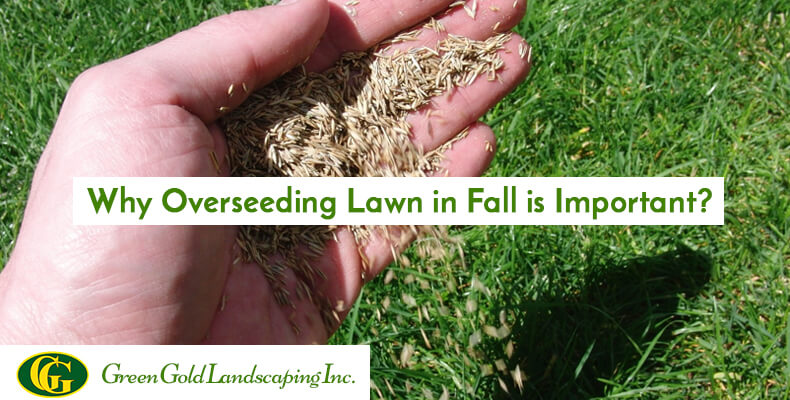27 Sep
Why Is Fall Overseeding Important?
Posted By Ervin in Gardening
Fall Overseeding is a process of spreading the grass seed over the existing turf to improve its thickness and health. Overseeding is undoubtedly the only process that helps the lawn to be in a luxurious state.
Fall is the best time to perform the overseeding because the temperature of the soil is still warm. The conditions are also good for the germination of the seeds. Another reason for fall overseeding is that weeds do not germinate in the fall season and the cooler temperatures do not allow the growth of fungus and pests. The water is available abundantly due to rains in the autumn season, helping the grass seeds to grow faster.
When to Overseed Lawn in Fall?
The time for overseeding the lawn depends on the temperature (between 60 and 75 degrees Fahrenheit) of your area. The best time to overseed a garden is the early fall, and this is the time that the turfgrass germinates. The seedling will go through the winter season and get ready for the beautiful spring season ahead.
Benefits of Overseeding in Fall
- Overseeding promotes the growth of the blades of grass and
- Helps to maintain the thickness of the lawn every year.
- The bare spots on the lawn are cleared.
- Reduction of stress on the existing grass, and there are fewer diseases.
- Increase in the density and thickness of the grass.
- The lawn looks beautiful and healthy.
How To Overseed the Lawn in Fall?
When you have decided to overseed, there are some series of steps to follow in fall overseeding.
1. Selection of Seed: The first step is to select the best grass seed suitable for the climatic and soil conditions of your area. You have to apply the correct amount of seed to the lawn with the help of a lawn seed spreader. The seed that is spread has to match with the already present grass in the lawn. Correct calculations are to be done regarding the amount of seed required for the overseeding.
2. Mowing the Grass: Fall Overseeding begins with the mowing of the grass in your lawn. The grass can be cut as short as the mower can cut. The grass clippings can be left in the garden to form compost for the new turf.
3. Application of the Grass Seeds and Compost to the Lawn: In the next step, layers of grass seed and fertilizers are evenly applied over the entire garden. Mulching is required to keep the seeds and fertilizers intact on the ground.
4. Watering the Lawn: After the seeds are applied, a watering regimen is to be kept to ensure that seeds are in humid conditions every time. Watering and fertilization after overseeding have to be done appropriately for the right growth of the seeds.
Aeration and Overseeding in the Fall
Overseeding is always followed by aeration to maximize the germination process. Aeration of the lawn pulls cores of the soil from the garden so that the water, air, and nutrients reach the grassroots accurately. The holes formed during the aeration process also give scope for the new seeds to germinate faster.
Conclusion
Don’t let your Fall Overseeding process get delayed. It should be done before the frost arrives. Are you a homeowner in Westchester County or Greenwich CT? Book a slot early for fall lawn care services with Green Gold Landscaping. Contact or Call us now at 914-882-5459 if you have any queries.









